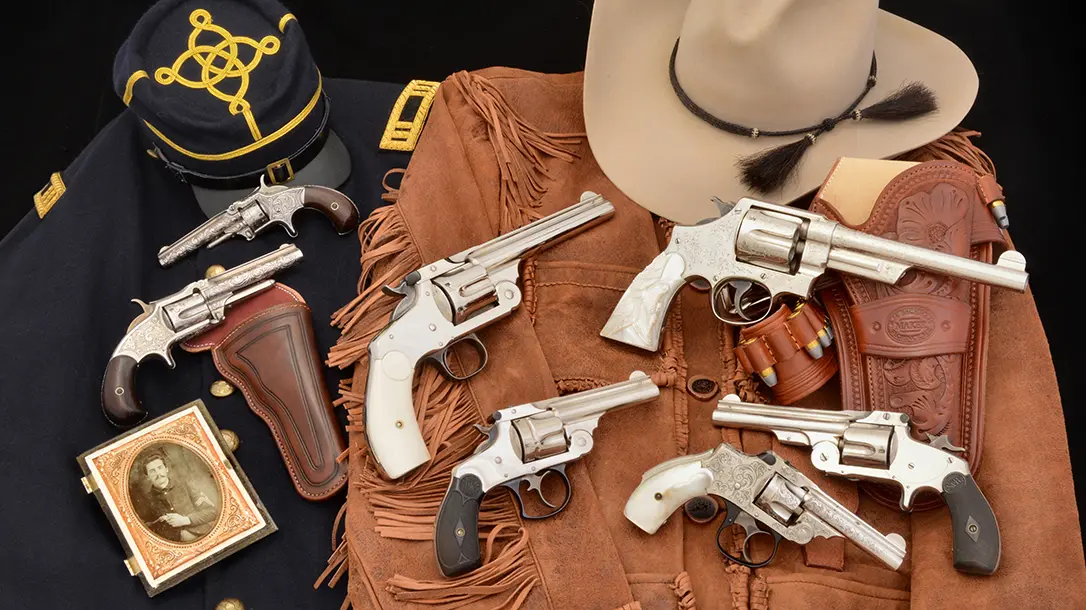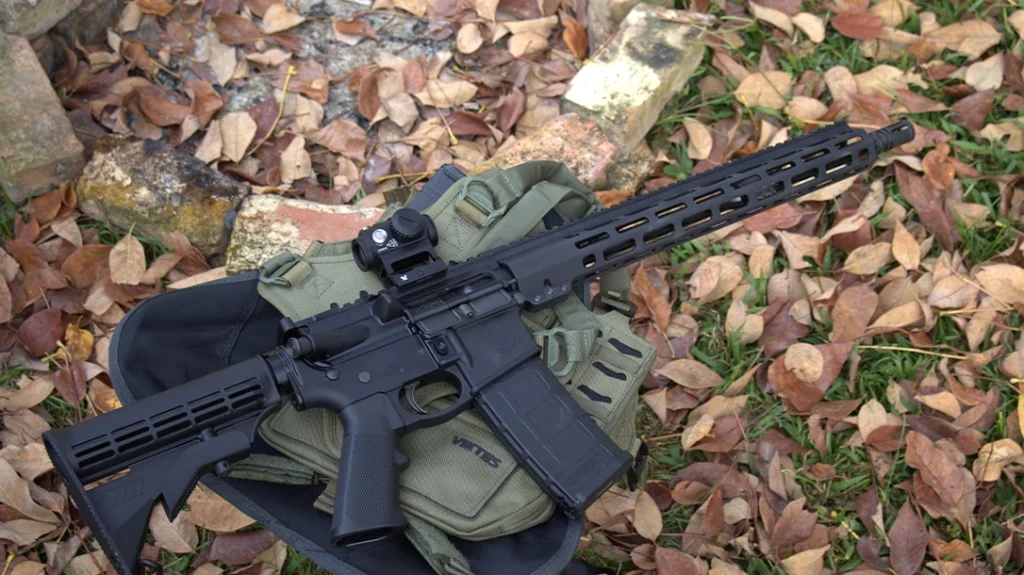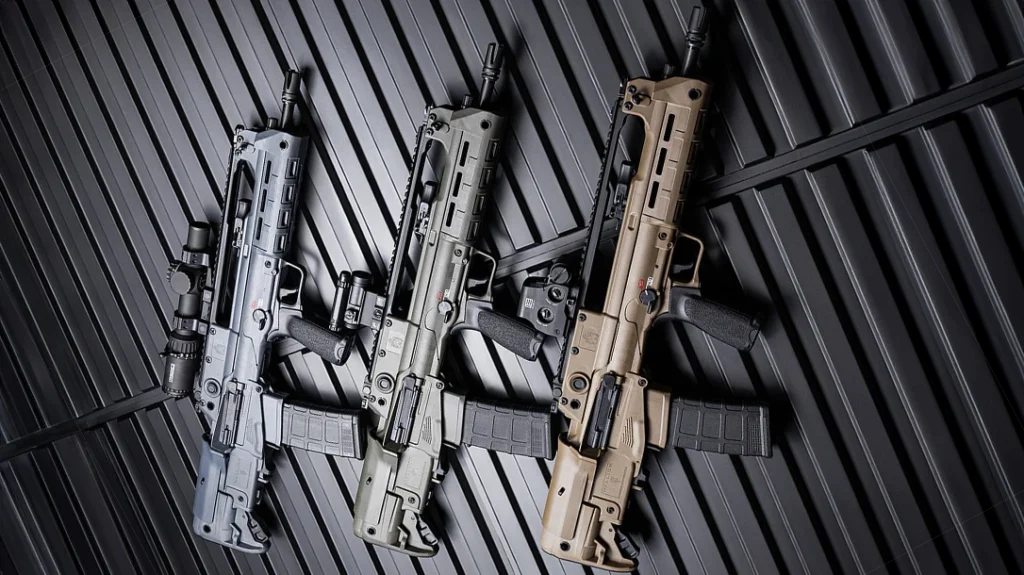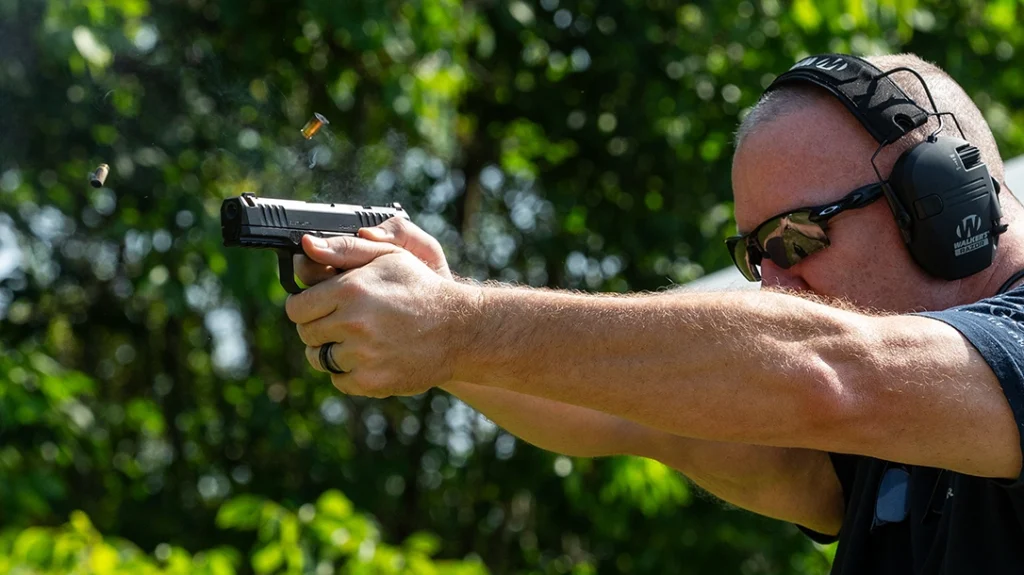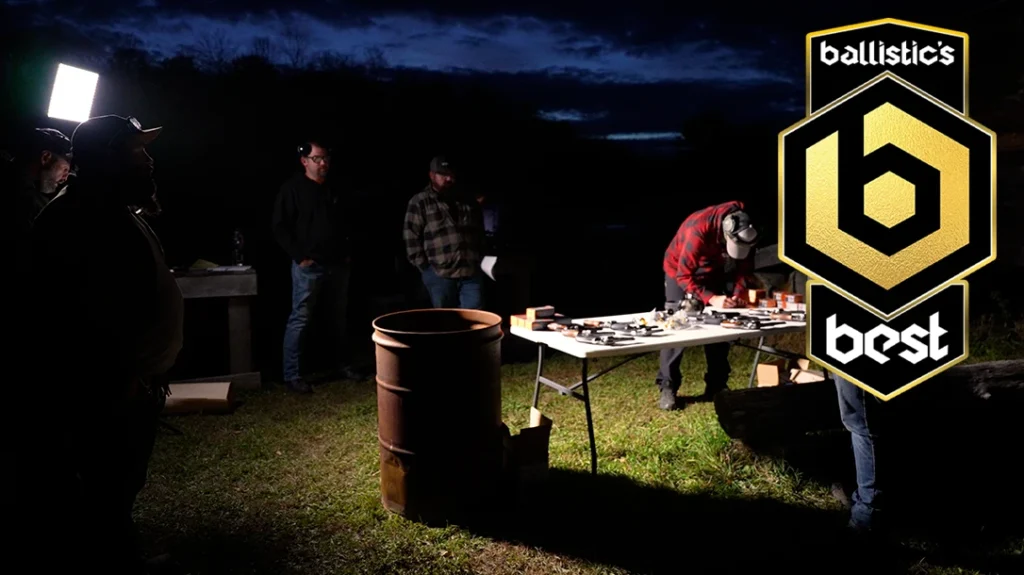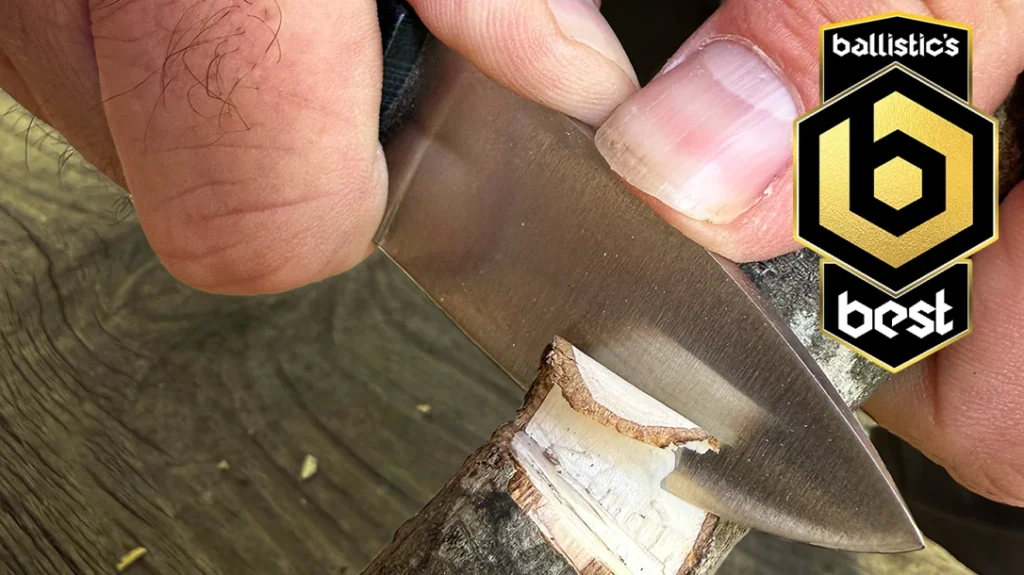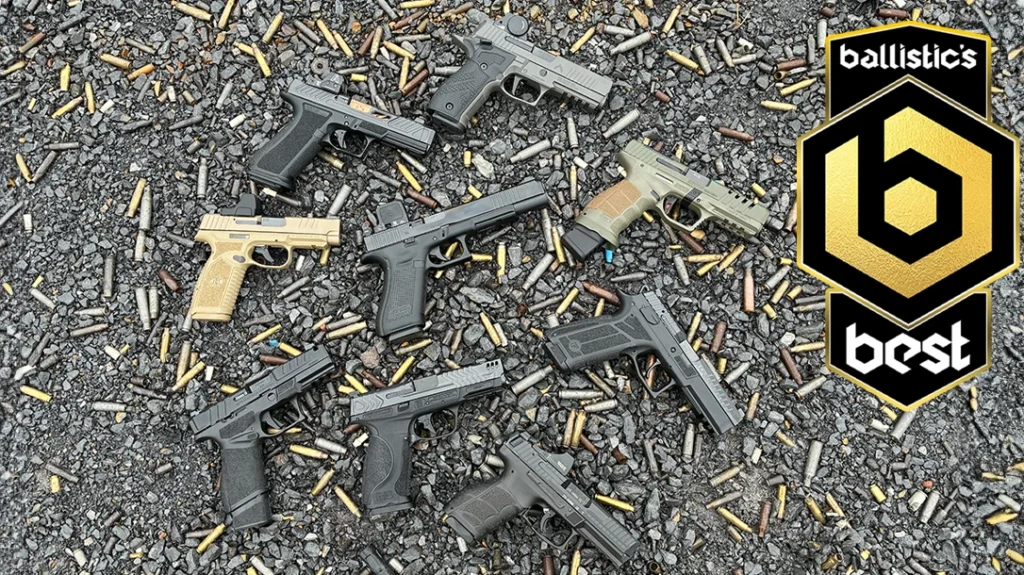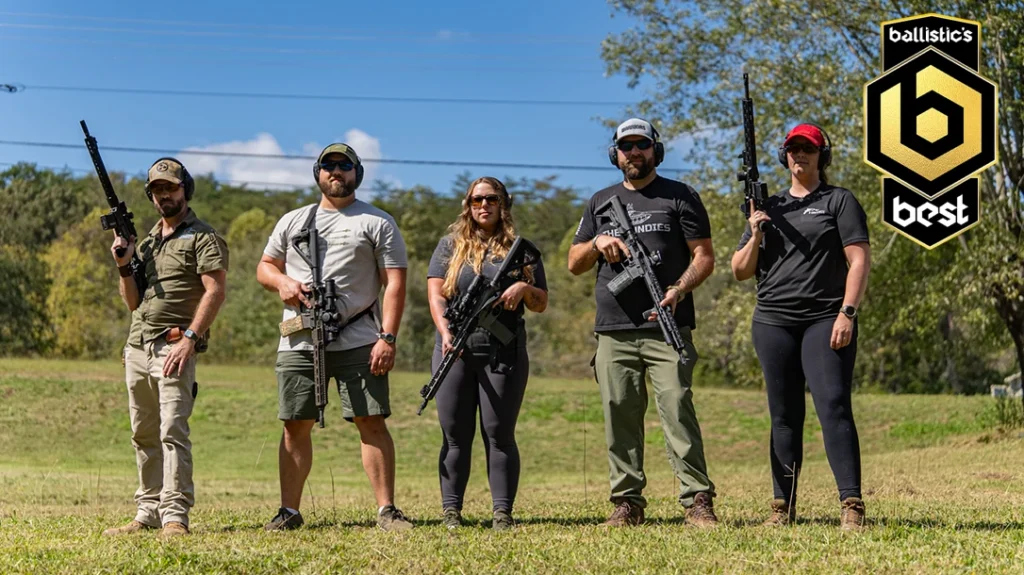In the chronicles of the American Frontier, two names have become synonymous with “The Gun That Won the West”: Colt and Winchester. And, as true as that may be, historically, two other American arms makers have an almost equal claim to the title, Remington and Smith & Wesson. If we are talking about cartridge-loading revolvers, S&W can quietly step up to the plate and take the first swing, albeit only a bunt. Regardless, Smith & Wesson and the American Old West remain forever linked.
Smith & Wesson & the American Old West
While Colt and Remington stumbled into the post-war Western Expansion trying to convert their old cap-and-ball revolvers to fire metallic cartridges, and Winchester was evolving out of the Civil War-era New Haven Arms Co., Smith & Wesson was busy filing backorders for its .22- and .32-caliber cartridge revolvers and developing a new .44-caliber top-break model that would precede the introduction of the Colt Peacemaker by three years! And regarding Winchester, were it not for Horace Smith and Daniel B. Wesson, it is unlikely there would have been a Winchester Repeating Arms Co.
Mr. Smith and Mr. Wesson take the field
While Sam Colt was embarking on his second career in the arms making business in Hartford, Connecticut, over in Springfield, Massachusetts, a new company was emerging out of a partnership formed by firearms designers Horace Smith, the former production supervisor for Robbins & Lawrence in Windsor, Vermont, and Daniel B. Wesson, the superintendent for Leonard Pistol Works. As fortune would have it, Leonard pistols were made under contract by Robbins & Lawrence, and Mr. Smith met Mr. Wesson.
Advertisement — Continue Reading Below
Among Daniel’s passions was a new French rifle design, essentially a gallery gun used for indoor target shooting, that fired a tiny lead ball contained in a cartridge designed by Louis-Nicolas Flobert. The cartridge was comprised of a brass case with a touch of fulminating mercury in its base, a few grains of black powder, and a tiny round lead ball. When the brass cartridge was struck by the hammer, the fulminating mercury ignited, sending a spark into the powder charge, which exploded and sent the little lead ball downrange to its intended paper or metal target.
The Saloon Pistol
Smith became equally infatuated with the idea and they designed a “saloon pistol” based on the Flobert but using a mechanism that allowed multiple shots and the chambering of rounds by operating a ring lever toggle link action of Smith’s design. What the two men arrived at would not only change the way rifles were to be made for the better part of the 19th century (and to the present day) but the very notion of how they would be loaded and with what.
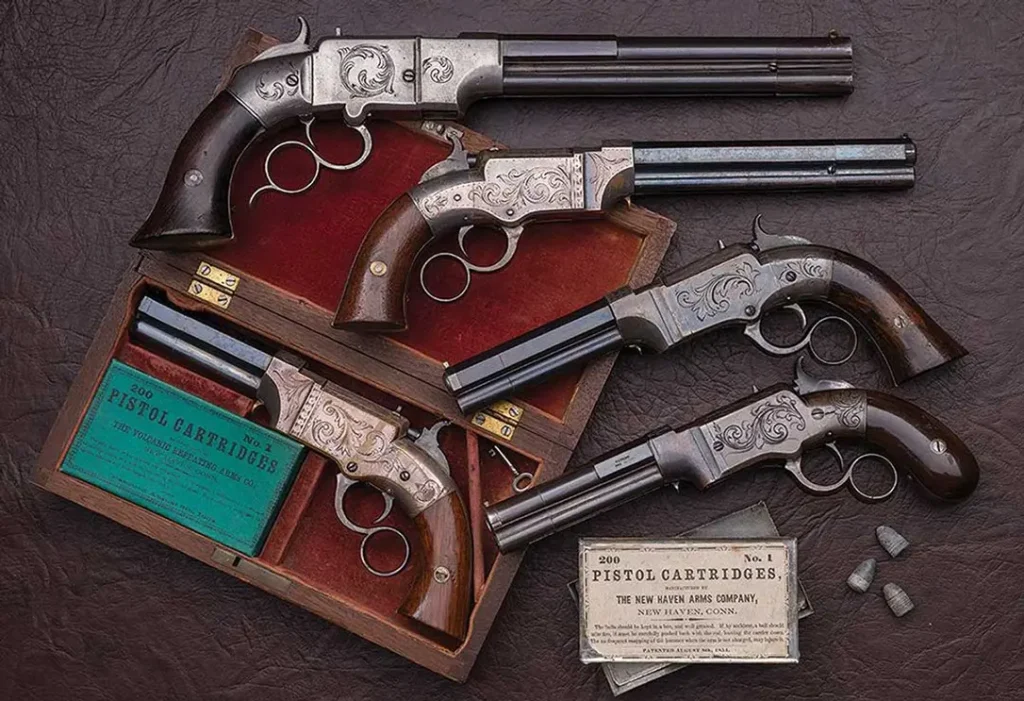
Advertisement — Continue Reading Below
Two pivotal developments arose out of Horace Smith’s and Daniel Wesson’s collaboration in 1854. The first was a design that would evolve into the Volcanic rifles and pistols (pictured above, and in which you can see the rudimentary beginnings of the Henry Rifle), and the Volcanic Repeating Arms Co., which in turn would become the foundation for the New Haven Arms Co., development of the Henry, and eventually the creation of the Winchester Repeating Arms Co. The second was Daniel Wesson’s development of the .22-caliber Short, the first American-made metallic cartridge, for which Smith & Wesson received a patent on August 8, 1854.
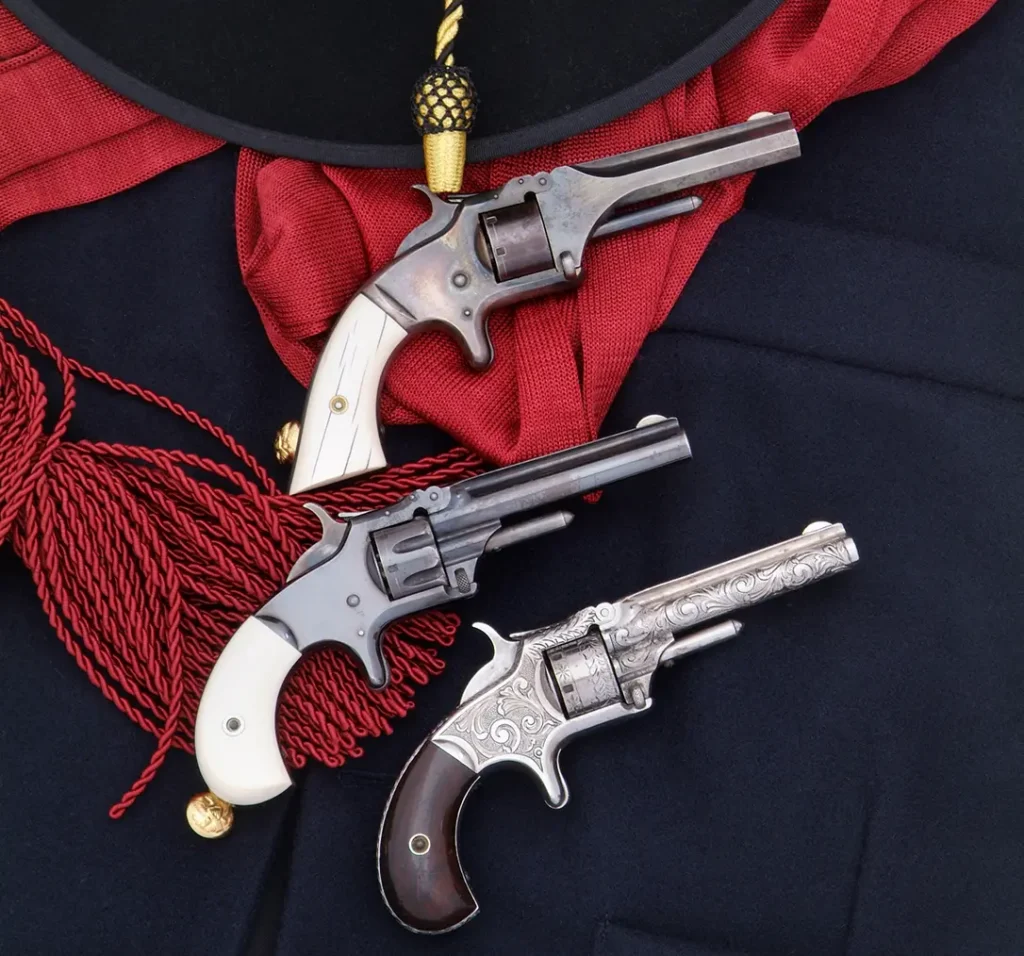
The Great White
By 1856, fate, in the guise of inventor Rollin White, would enter Smith and Wesson’s lives. Daniel Wesson saw White’s patent filing for the bored through cylinder. So he sent him a letter of inquiring, writing: “I notice in a patent granted to you…one claim–viz–extending the chambers of the rotating chamber right through the rear end of said cylinder so as to enable the said chambers to be charged from the rear end either by hand or by means of a sliding charger.” The letter brought White to Smith & Wesson’s doorstep.
Advertisement — Continue Reading Below
After a meeting explained that S&W held the patent rights for the bullet that would fit White’s cylinder, the men reached an agreement giving Smith & Wesson exclusive license to the White patent in exchange for a .25-cent royalty on every cartridge-firing handgun they manufactured. When Sam colt’s patent extension for the revolver expired in 1857, S&W immediately came to market with their first model. More importantly, the gun became America’s first breech-loading, cartridge-firing revolver. The design comprised one no arms maker in the United States, including Colt’s, could copy for the next 12 years!
Smith & Wesson produced the First Model No. 1 (variations pictured above) through 1860. The improved No. 1 Second Issue replaced it in 1860, remaining in production until 1868. With the beginning of the Civil War, orders for the little seven-shot, .22-caliber revolvers soon exceeded production capability.
S&W Model No. 2
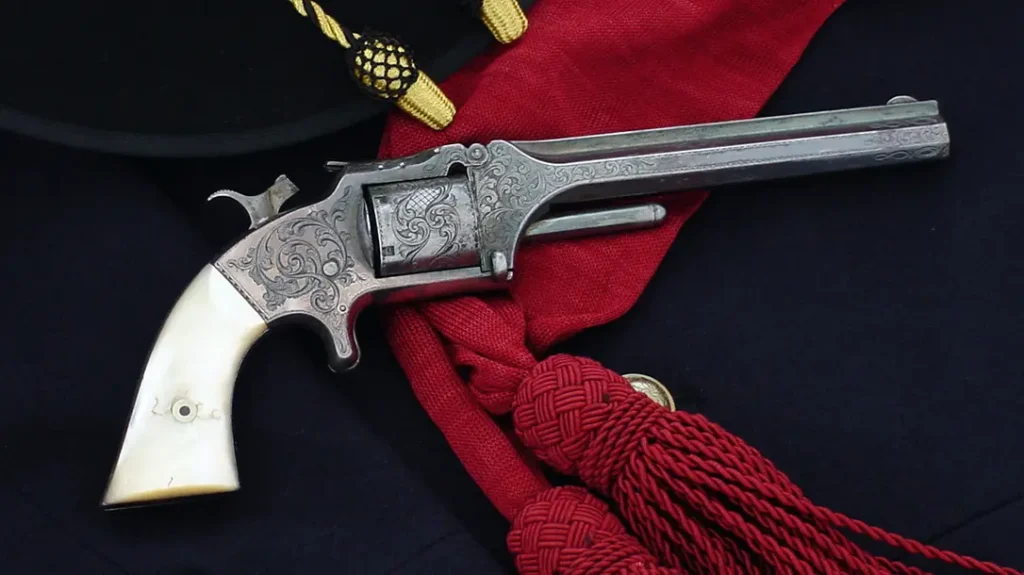
Advertisement — Continue Reading Below
One reason was that S&W had developed another model, and in June of 1861 they introduced the Model No. 2, a more powerful six-shot .32 rimfire-caliber version with barrel lengths of up to 6 inches. The medium frame, spur trigger, belt-sized pistol was suitable for carry in a small holster or tucked into the waistband. Though not regarded by the Ordnance Department as powerful enough for use as a military sidearm, individual soldiers felt differently. The .22 Short S&W Model No. 1, .32 rimfire No. 2, and the smaller Model No. 1-1/2 (introduced in 1865, also chambered in .32 rimfire) ascended to among the most highly demanded backup guns for Union soldiers and infantrymen. And these men purchased the pistols with their own money.
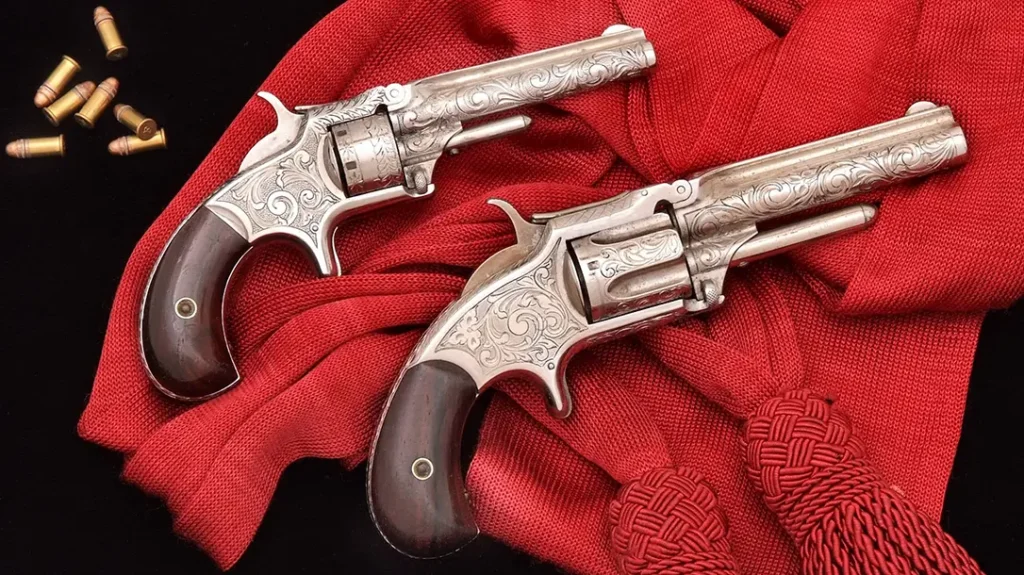
The No. 1-1/2 (pictured above with a No. 1), was manufactured through 1868, while high demand kept the No. 2 in production until 1874! Among famous owners were Wild Bill Hickok, Rutherford B. Hayes, and General George Armstrong Custer. Hickok had a .32-caliber No. 2 tucked in his vest pocket on that fateful August day in 1876.
Advertisement — Continue Reading Below
S&W’s Post Civil War Era
By the 1870s, the self-contained metallic cartridge introduced by S&W had grown up from an anemic .22 Short in 1857 to the man-stopping .45 Schofield in 1875. Somewhere in the middle was the .38 S&W-caliber round, for which Smith & Wesson introduced a pocket model in 1876. The new pistol looked like a smaller version of their Top-Break .44 S&W Model No. 3 American single action, but with a spur trigger and no trigger guard.
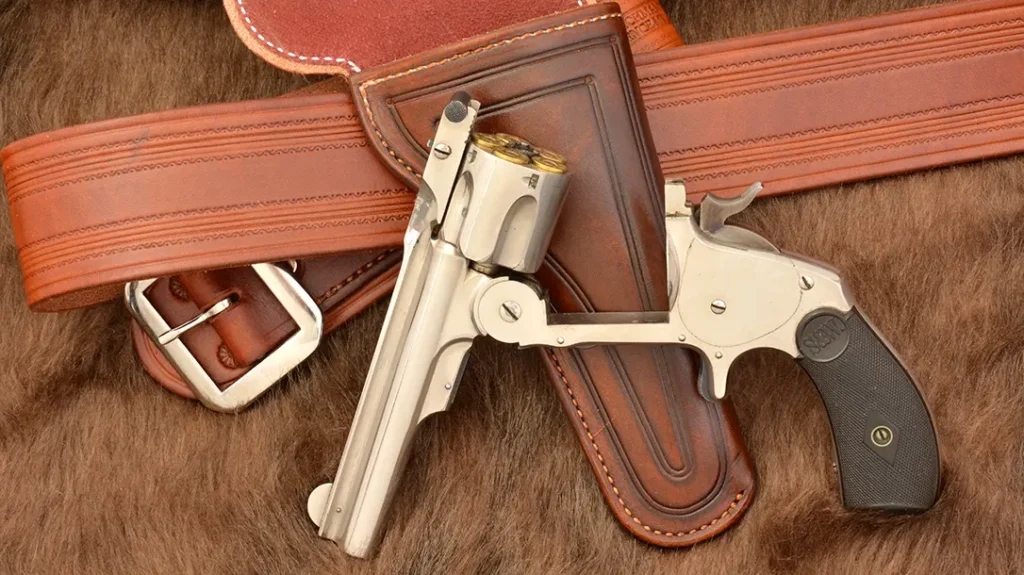
Originally known as the Model 2, the new little .38 relegated the Civil War-era .32 rimfire Model 2 to the status of “Old Model No. 2,” or “Old No. 2 Army.” S&W’s first .38 centerfire pistol also picked up a rather catchy nickname of its own, the “Baby Russian.” Only 25,548 were manufactured before S&W introduced an improved 2nd Model in 1877. A year later, a new centerfire .32 S&W cartridge was announced, along with a top-break model cataloged as the No. 1-1/2. In 1891 the 3rd. Model .38 Single Action, with an added trigger guard, was introduced, and by the early 1890s Smith & Wesson had manufactured more than 97,000 revolvers in .32 S&W and 108,225 chambered in .38 S&W.
Advertisement — Continue Reading Below
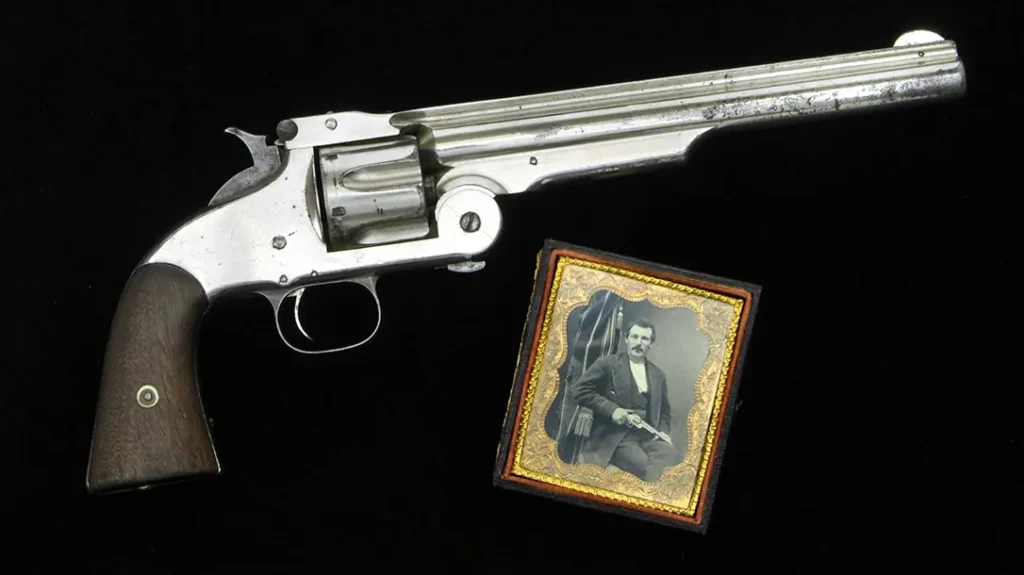
The Large-Caliber S&Ws
S&W had beaten Colt’s to the draw in 1870 by introducing the first all-new, large-caliber cartridge revolver produced in America. The .44-caliber S&W Model 3 American was a top-break single action faster to handle, load and unload than any other handgun up to that point in time. When broken open the S&W simultaneously ejected the spent shells in all six chambers. (Unfortunately it also ejected any unfired rounds if opened prematurely.) The Model 3 American was chambered in both .44 rimfire Henry, though only around 200 were produced, and in .44 American (also known as .44 S&W or .44/100).
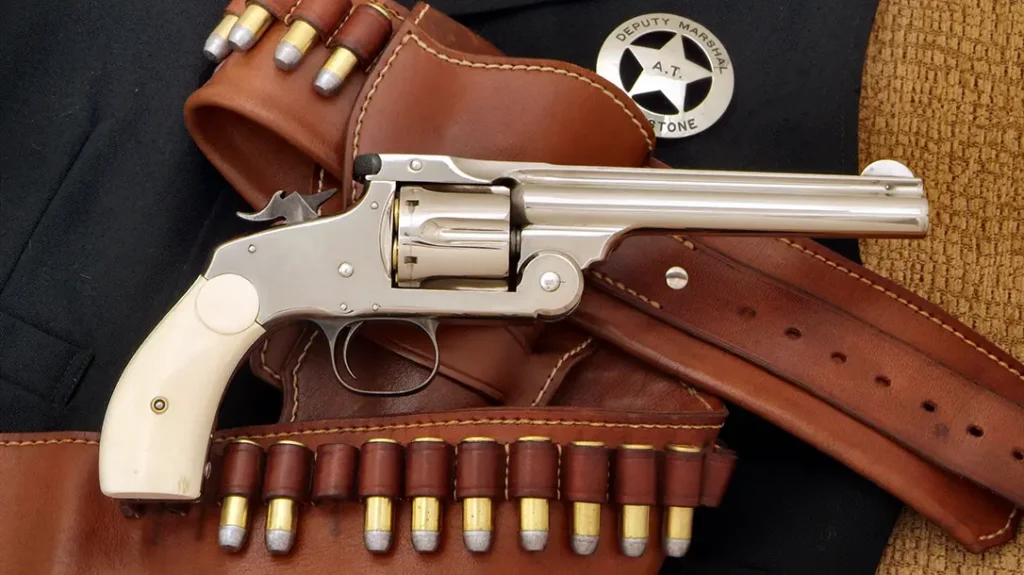
Advertisement — Continue Reading Below
The next .44 in the line was the 2nd Model American, which differed in the frame design with a bump in the bottom of the frame to accommodate a larger trigger pin. The 2nd Model American also bore a number of minor exterior modifications made to No. 3 models produced under contract for the Russian military. A third variation, the New Model No. 3, (pictured above), manufactured from 1878 to 1908, featured a standard barrel length of 6-1/2 inches and chambered in .44 S&W Russian, a proprietary caliber developed in 1870 for the Russian contract.
New Model No. 3 barrel lengths varied from 3-1/2 inches to 8-inches, and a detachable shoulder stock was available. Smith & Wesson also produced the model in .32-44, .38-40, .44-40, and .320 caliber for a revolving rifle variation. Between 1870 and 1912 total production for No. 3 Americans, the New Model No. 3, New Model No. 3 Frontier, and foreign contract production (aside from Russian military contract models) totaled over 110,700 guns. Among notable owners were Virgil Earp and outlaw Jesse James. Bob Ford, one of James’ gang members so admired the S&Ws he carried, that Jesse gave him one as a gift (pictured below). Unfortunately, it was the gun that Bob Ford would use to assassinate James on April 3, 1882.
S&W Schofield
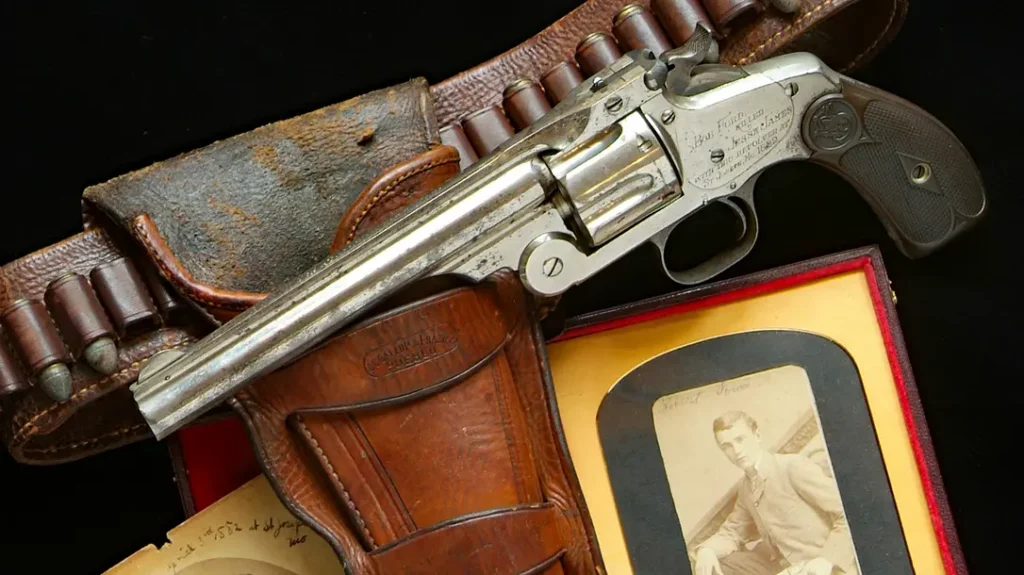
Advertisement — Continue Reading Below
Although the vast majority of sidearms carried by the U.S. Army in the 1870s were Colt Single Actions, S&W had been the first to get military contracts for its top-break .44-caliber models in 1870. The S&W Schofield provided the most noteworthy variation, designed specifically for the mounted soldier. This version, chambered in a new caliber, .45 Schofield, arrived in 1874 as an improved No. 3 American designed by U.S. Army Colonel George W. Schofield. The first .44-caliber S&W revolvers used by the U.S. Army in 1870 drew criticism from the Cavalry for the top-break design, which had the release latch mounted on the rear of the barrel, requiring two hands to open the action. This was often difficult to do on horseback.
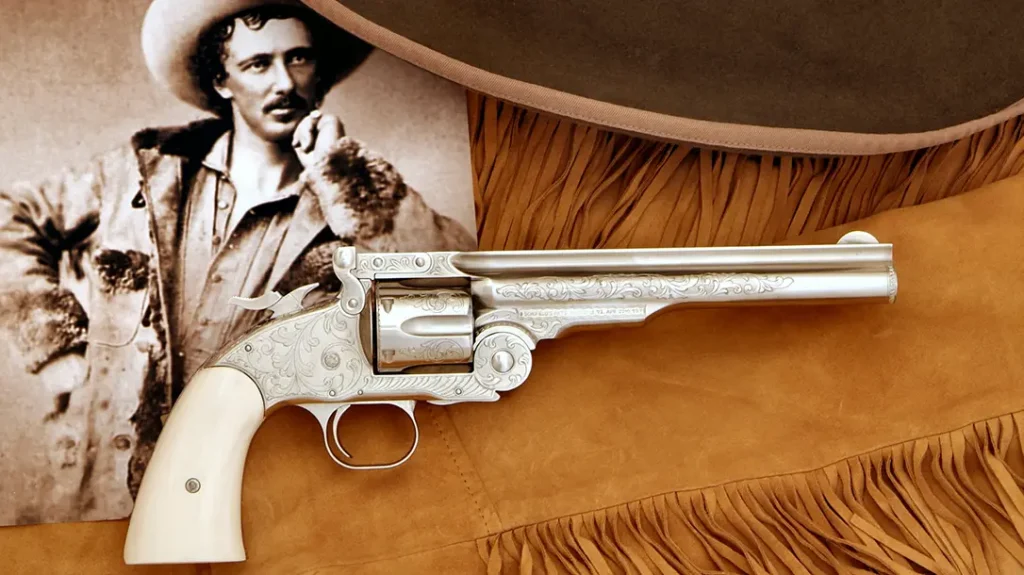
Schofield, then a Major, redesigned the latch mechanism to fit on the frame and thus release the barrel by simply pulling the latch back (with the hammer at half cock) and pressing the barrel down against one’s leg or the saddle to pivot it open and eject the spent shells. Reloading was still one round at a time but the Schofield was significantly faster than the Colt SAA. The new design encouraged the U.S. Ordnance Dept. to order almost the entire production of this distinctive S&W model. Army Scout and Wild West showman Texas Jack Omohundro provides backdrop to an engraved example (above).
Schofield Problems
There was, however, one drawback to the Schofield. The cartridge was slightly shorter than a .45 Colt round. A Schofield cartridge would fit into a Colt SAA, but the .45 Colt was too long for the Schofield’s cylinder. Needing two different revolver cartridges was a logistics problem leading to the .45 Colt becoming the preferred round and the SAA the standard issue military sidearm.
Colt’s dominance with the military did not deter S&W, which was doing quite well with the civilian trade. Never as popular as the Colt Peacemaker, according to S&W historian Roy Jinks, in his book 125 Years with Smith & Wesson, total Model 3 production in all variations reached 250,820 by 1912, the last year of manufacture. Colt began the year at serial number 321,000, and first generation production would conclude in 1940 at serial number 357,859.
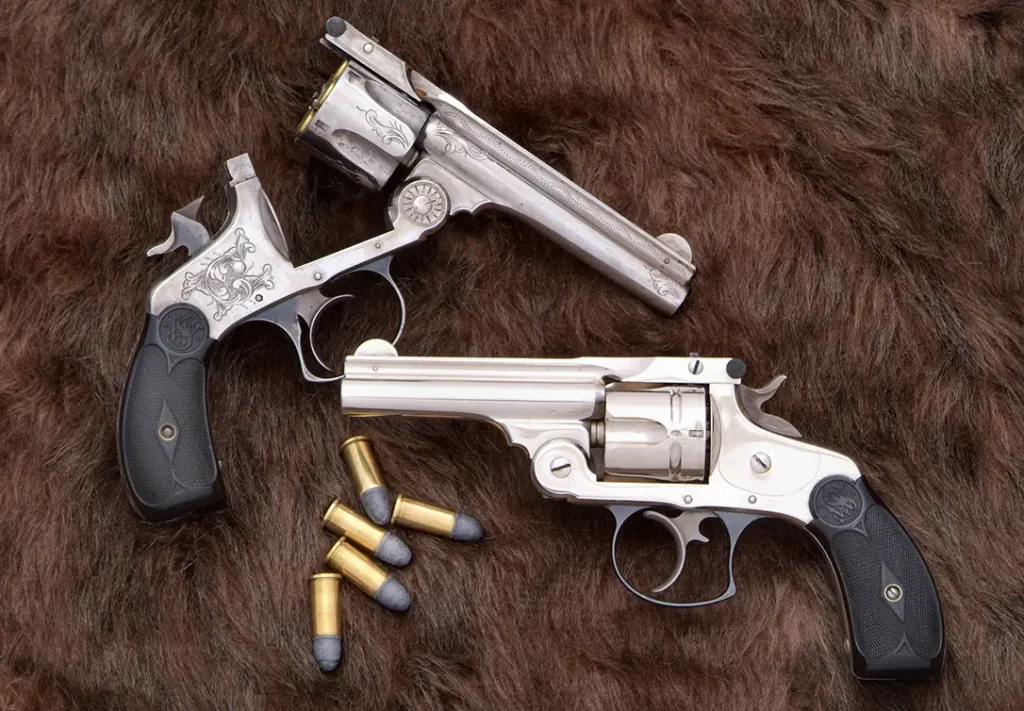
Doubling Down – S&W Goes Double Action!
Colt’s was the first to broach the idea of a double-action cartridge revolver in 1877, three years before S&W introduced their first DA model. The initial S&Ws, c.1880-81, were the wellspring for several of the finest and most advanced handguns of the American West. Based on the top-break frame design, the DA models offered different sizes and three calibers: .32, .38, and .44. The first were chambered in .32 S&W. The five-shot revolvers introduced a new trigger guard with a reverse curve at the rear. An experimental design, S&W built a mere 30 before introducing an improved 2nd Model in 1880, including .38-caliber versions and later a .44 caliber.
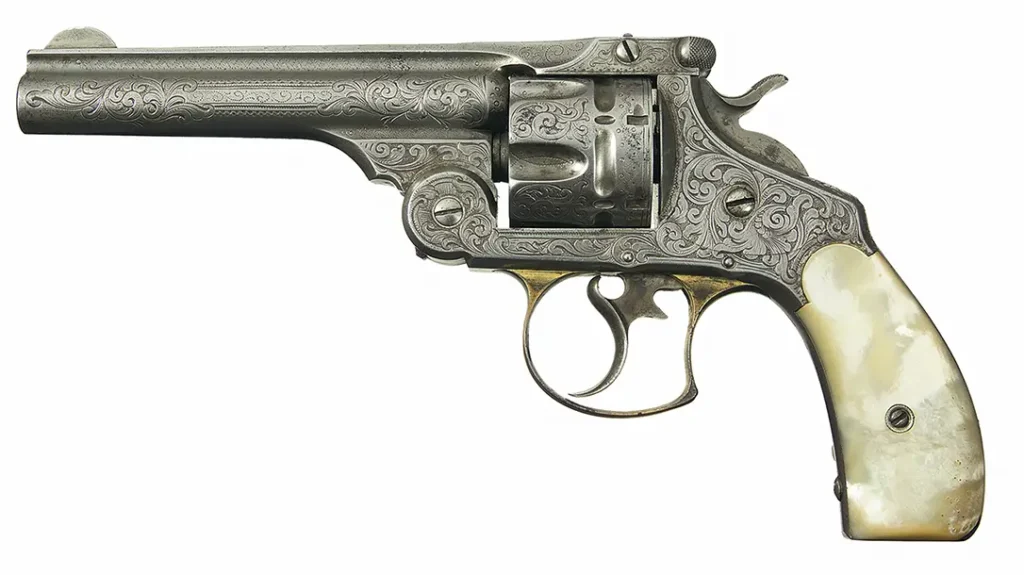
For the next four decades, S&W’s popular .32, .38, and .44-caliber double actions (.44 pictured) came out in a variety of model ranges and barrel lengths. In .32 caliber were barrel lengths of 3-inch, 3-1/2-inch, and 6-inch. The .38s in 3-1/4-inch, 4-inch, 5-inch, and 6-inch; .44’s in 4-inch, 5-inch, 6- and 6.5-inch, and all with either blued or nickel finishes. S&Ws would become the most prolific small-, medium-, and large-caliber double-action revolvers well into the early 20th century, reaching one of its many high points with the 1st Model Triple Lock (1905) and 2nd Model .44 Hand Ejectors (1915), pictured below.
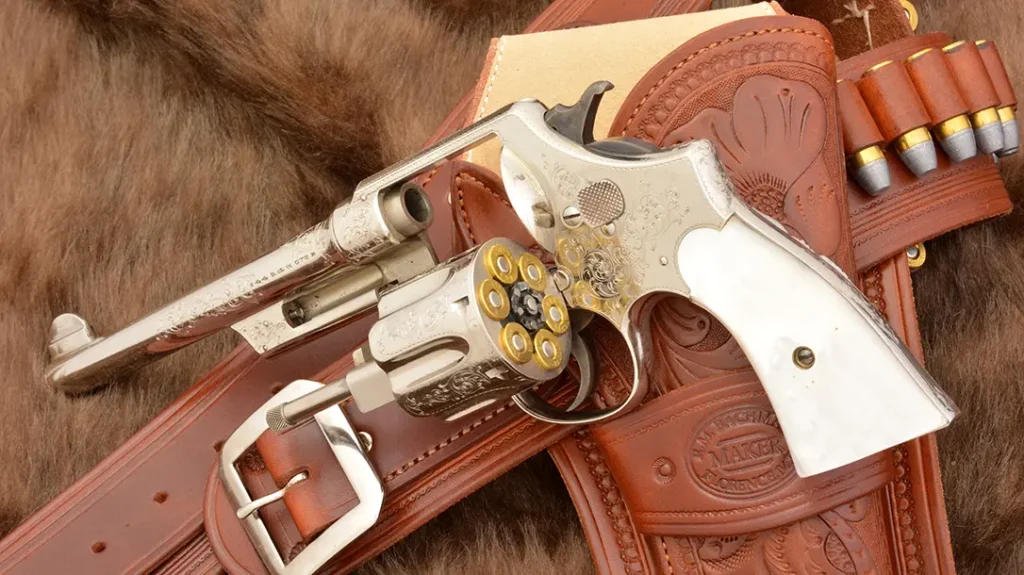
The models featured solid frames and side-swing cylinders with a thumb piece release on the left side of the frame, a design still used to this day!
Smith & Wesson & the American Old West
S&W has come a very long way since its first seven-shot .22-caliber rimfire pocket pistol, firmly establishing a reputation that has kept Smith & Wesson at the forefront of American arms making since the days of the Civil War and the American West.
For more on Old West guns, visit centerofthewest.org.
